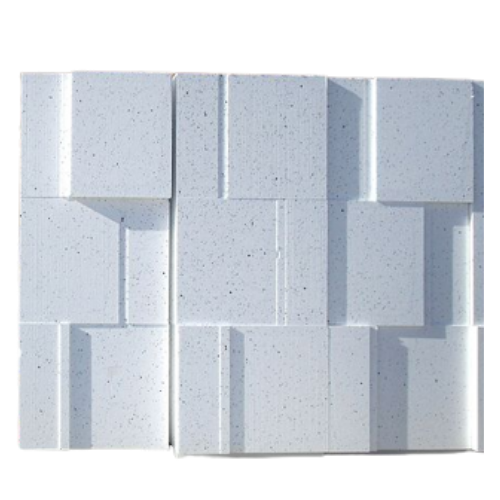Geofoams
Geofoams are a cellular plastic material that is strong but has a very low weight – 1 percent of traditional earth fill materials. Geofoam is produced in block form and is easily positioned at the worksite. They are unaffected by normally occurring weather at the time of installation and will retain their physical properties under engineered conditions of use. Geofoam is made up of huge lightweight blocks made of expanded polystyrene (EPS) or extruded polystyrene (XPS). The major use of geofoam is to fill voids beneath highways, bridge approaches, embankments, and parking lots. On subsurface utilities, EPS Geofoam reduces settling. Lightweight fill, green roof fill, compressible inclusions, thermal insulation, and drainage are just a few of the applications for geofoam.
Geocombs (previously known as ultralight cellular structures) share similar principles to geofoam. Geocombs are defined as “any manufactured material created by an extrusion process that results in a product that consists of various open-ended tubes which are glued, bonded, fused, or otherwise bundled together. An individual tube’s cross-sectional geometry is often a basic geometric shape such as a circle, ellipse, hexagon, octagon, etc.
Applications Of Geofoams
Reduce settlement by replacing heavy fill materials.
Backfill to reduce lateral pressures behind the retaining walls
Reduce load on underlying compressible soils to minimize settlement.
Create topography and reduce loads on underlying structures and services.
Form tiered seating in locations like auditoriums, movie theaters, and gymnasiums.
Support highway loading safely without over-stressing the underlying soils and minimizing differential movement.
Advantages Of Geofoams
Extremely lightweight reduces lateral or bearing loads
Predicable engineered performance
Can be installed in various weather conditions
Maximizes Installation Efficiency
FAQ's
Geofoam is a solid EPS foam is used for lightweight fill, compressible inclusions, thermal insulation, and drainage in external applications. It is significantly lighter than most soil and has greater structural qualities in a variety of applications. Expanded polystyrene (EPS) beads are placed together in the form of a block to achieve a specified density and compression strength in Geofoam.
– Geofoams are suitable for project locations with weak soil.
– They are perfect for projects with short timelines.
– Cost-effective
– Frost-Protection for the soil.
–
– They are perfect for projects with short timelines.
– Cost-effective
– Frost-Protection for the soil.
–
Apart from being a lightweight alternative to soil, geofoam has a variety of advantages, including:
– Expedites construction.
– Can be constructed even during poor weather.
– Need for heavy earthmoving equipment is not required.
– Cost-effective throughout the whole project.
– Reduced labour.
– Reduce work to avoid additional stresses on retaining structures.
– Assist in preventing slope collapses.
– Expedites construction.
– Can be constructed even during poor weather.
– Need for heavy earthmoving equipment is not required.
– Cost-effective throughout the whole project.
– Reduced labour.
– Reduce work to avoid additional stresses on retaining structures.
– Assist in preventing slope collapses.
The steps involved in installing the geofoams are below:
1) Clean the site and grub the roots from the soil.
2) If necessary, excavate existing dirt.
3) Dewater the ground or soil.
4) Spread a thick sand pad or leveling course over the soil surface.
5) Geofoams must be placed tightly on the prepared sand pad or leveling course.
6) To avoid displacement due to wind or high water levels, geofoam must be given temporary ballast at all phases of construction.
1) Clean the site and grub the roots from the soil.
2) If necessary, excavate existing dirt.
3) Dewater the ground or soil.
4) Spread a thick sand pad or leveling course over the soil surface.
5) Geofoams must be placed tightly on the prepared sand pad or leveling course.
6) To avoid displacement due to wind or high water levels, geofoam must be given temporary ballast at all phases of construction.

